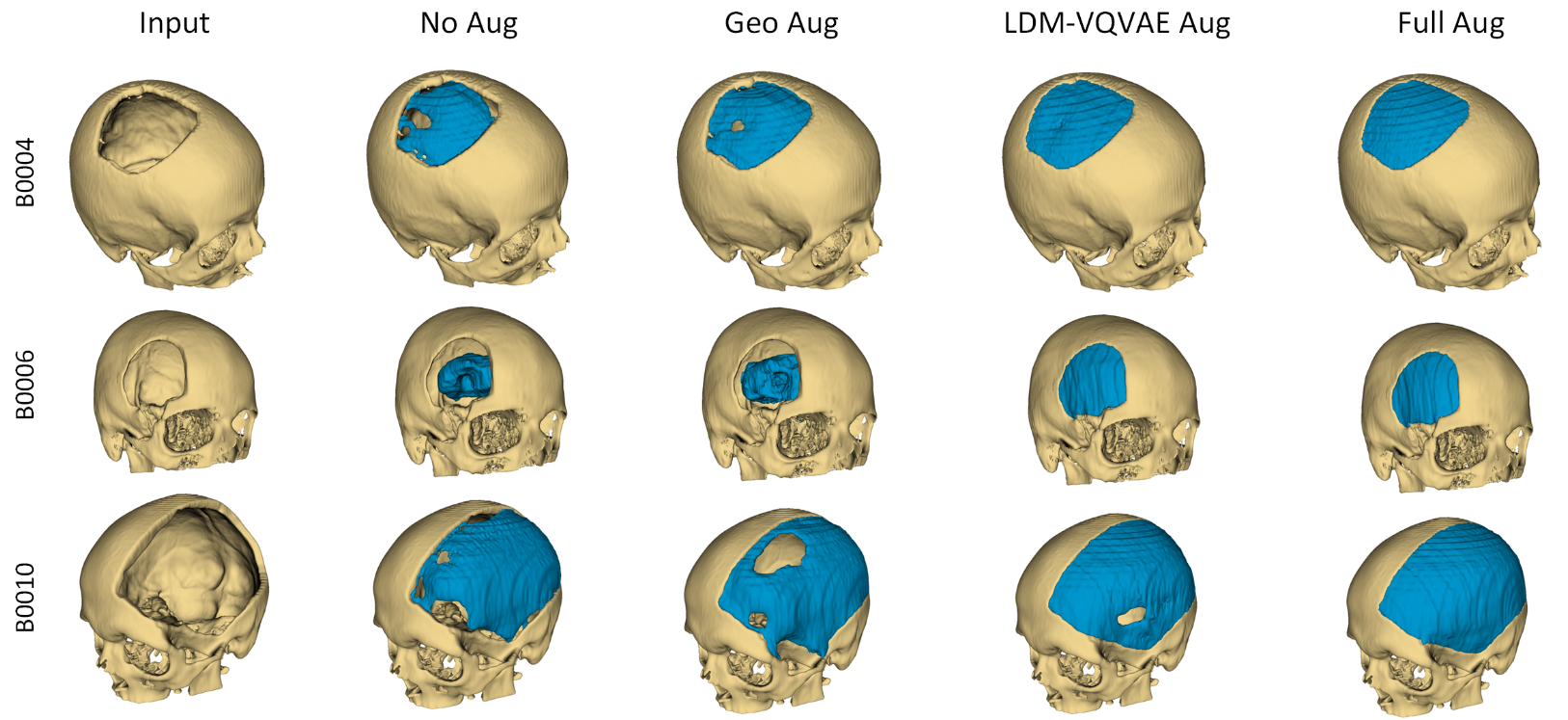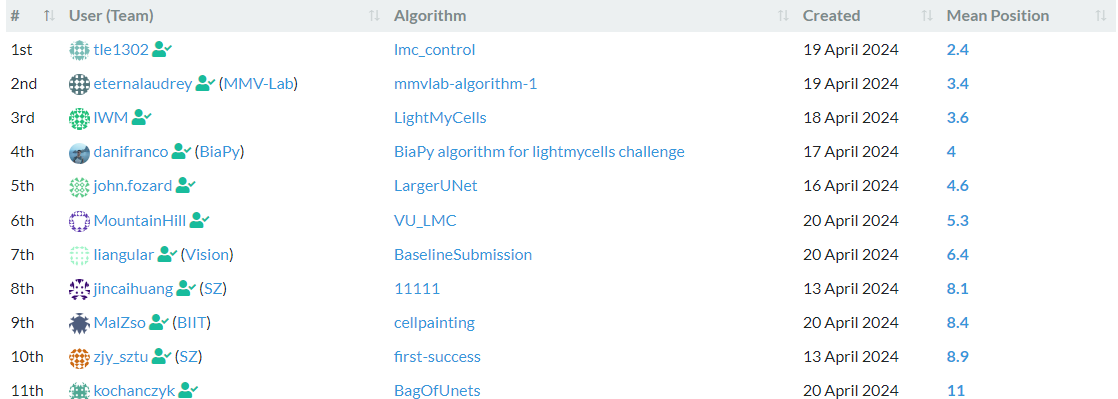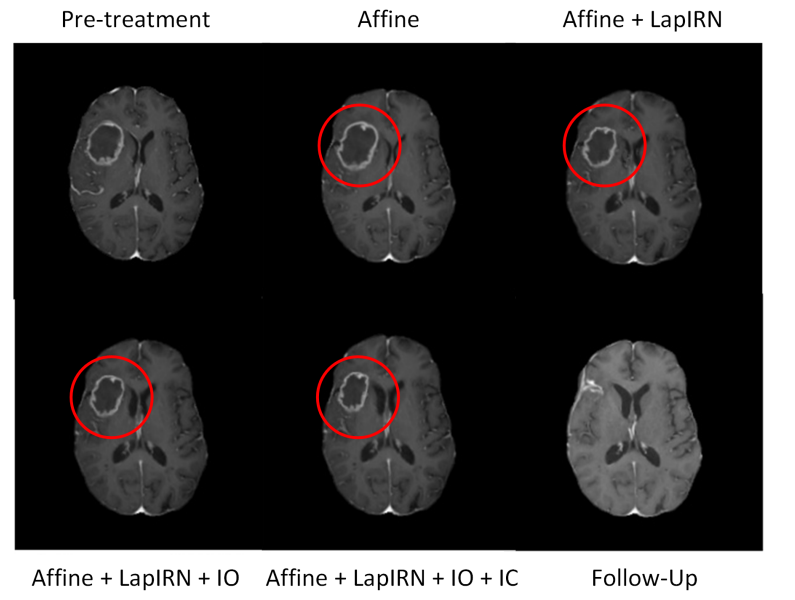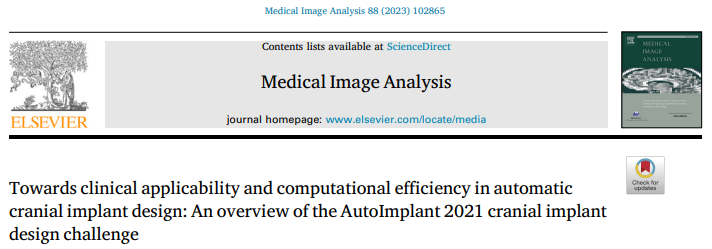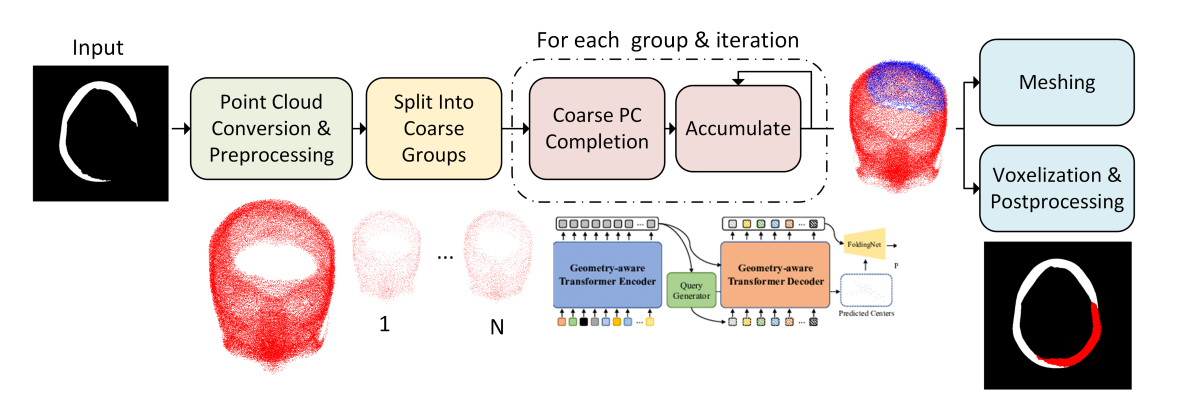News
19.10.2025 - Polityka Scientific Award!
🏆 Thrilled to share some exciting news! I’ve been awarded the 25th POLITYKA Scientific Award in the category of Technical Sciences 🎓
This recognition honors my research in automatic medical image analysis, with a special focus on the automatic design of personalized bone implants. It’s incredibly rewarding to see how AI-driven solutions can support personalized medicine and improve patient outcomes.
💡 This award is also a powerful motivation to continue our work - both at AGH University of Krakow and at Sano Centre for Computational Medicine - where our research teams are developing innovative applications of artificial intelligence in medicine. I’m proud to be part of these vibrant communities pushing the boundaries of digital health.
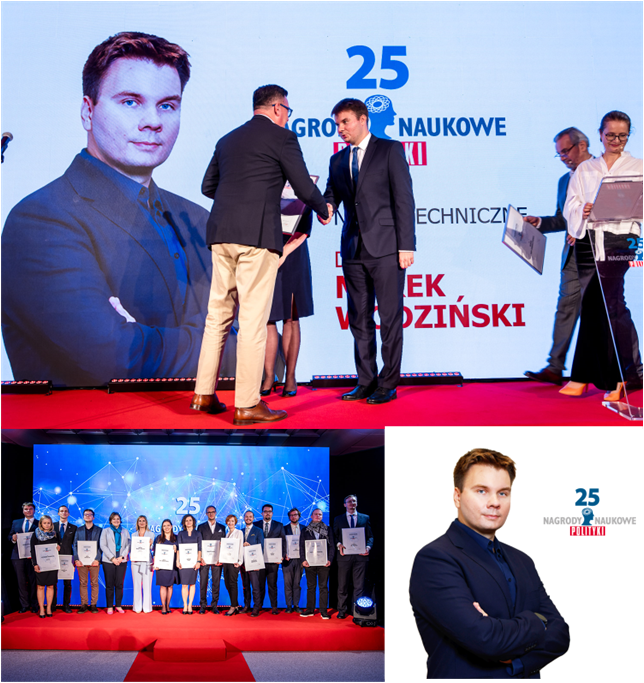
📸 Photo by: Teodor Klepczyński/Leszek Zych/POLITYKA
01.10.2025 - MultiGeoMed Project Started!
The research project: “Multimodal Geometric Deep Learning in Medical Image Analysis” has officially started! It is hosted at the Sano Research Centre.
The project is devoted to develop methods dedicated to multimodal geometric deep learning, aiming at processing different geometric representations simultenously - to improve several different downstream tasks in medical imaging. It is funded by the National Research Centre under the Sonata 20 programme.

29.09.2025 - New article in Veterinary Quarterly!
We’re excited to announce the publication of our latest research: “Automated Segmentation of Canine Pulmonary Masses in CT Imaging Using AI”. This multicenter study introduces a robust AI model trained on 217 canine CT scans to automatically segment pulmonary masses. The model performed especially well on well-defined lesions, offering a promising tool to support veterinary diagnostics and treatment planning.
13.08.2025 - Veterinary xAI Article in Scientific Reports
An interesting study related to xAI was accepted and published in Scientific Reports.
This study offers a comprehensive evaluation of Class Activation Mapping (CAM) techniques—including GradCAM, EigenCAM, and ScoreCAM—on over 7,000 canine and feline X-ray images to assess their interpretability in veterinary diagnostics. While EigenGradCAM emerged as the top performer, the findings reveal that no CAM method consistently enhanced veterinarians’ diagnostic confidence, highlighting the ongoing challenge of explainability in AI-assisted radiography. It confirms that other xAI methods are required to build the confidence of veterinary doctors to use AI solutions.
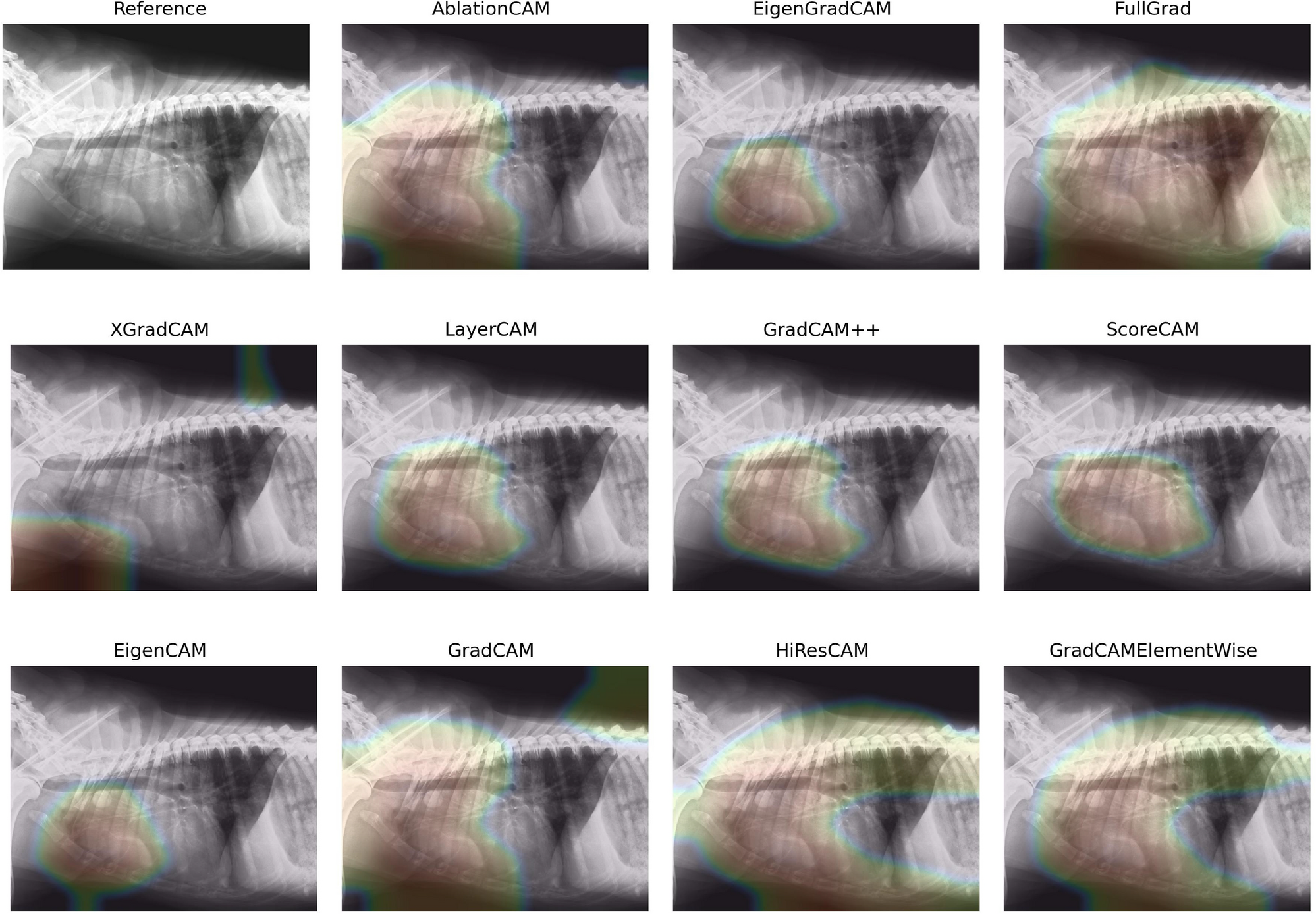
16.07.2025 - DeepImplant Article Published
Our publication related to the automatic skull segmentation has been published in Scientific Reports!
This publication presents our approach to automatic skull segmentation from magnetic resonance (MR) volumes without relying on ground-truth annotations. We demonstrate that unsupervised modality transfer from computed tomography (CT) to MR volumes is feasible. When combined with super-pixel scaling and histogram matching, this enables the training of a segmentation network entirely without supervision. This approach is particularly valuable for out-of-distribution cases, such as damaged skulls requiring cranial reconstruction. Our results represent a significant step toward the practical application of our cranial reconstruction methods.
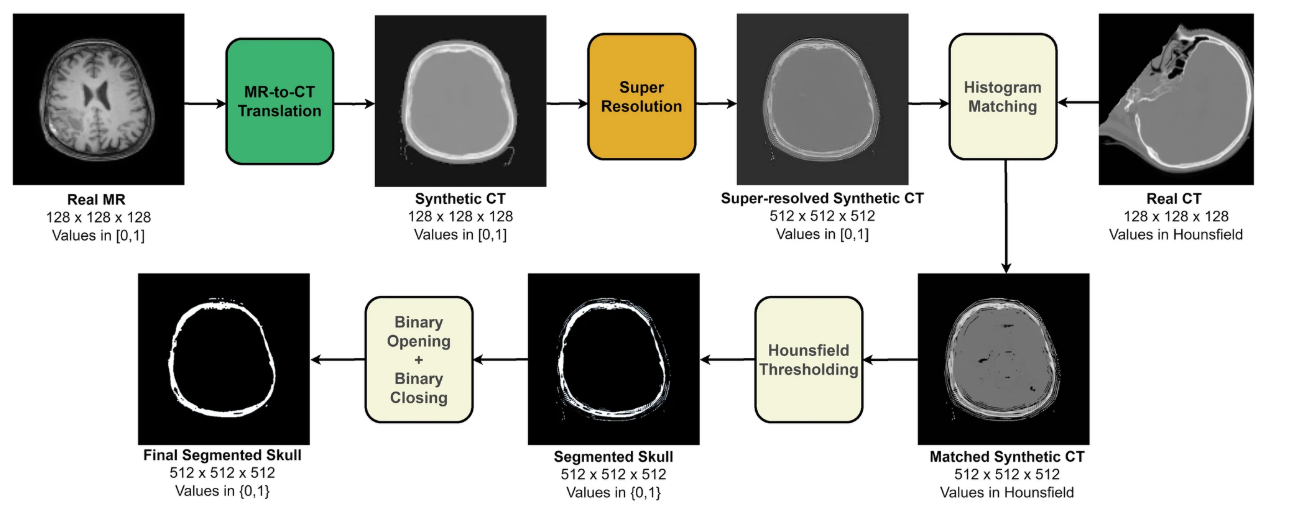
27.05.2025 - NCN Sonata Granted!
I am happy to share that my grant proposal entitled “Multimodal Geometric Deep Learning in Medical Image Analysis” has been accepted by the National Science Centre in Poland!
In the project we will explore how different geometrical representations can be used simultaneously to improve numerous downstream tasks in medical image analysis.
The project will be realized in cooperation with the international Sano Science. Soon I will announce open positions for PhD student and PostDoc, stay tuned!
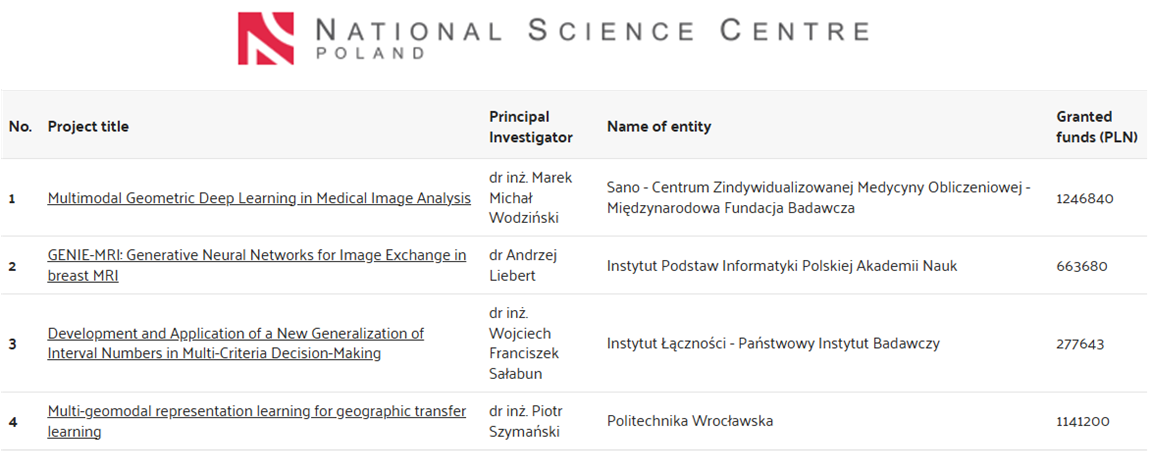
17.04.2025 - 1st place in the FuseMyCells challenge
I am thrilled to announce another success! My contribution has secured 1st place in the FuseMyCells challenge at the IEEE ISBI 2025 conference in Houston, Texas! 🎉
The goal of the challenge was to develop an automatic solution to fuse multiview 3-D lightsheet microscopy volumes from a single acquisition angle – significantly increasing imaging speed, reducing costs, and optimizing the photon budget.
A huge thanks to the challenge organizers and all the participants for making this event a memorable and inspiring experience!
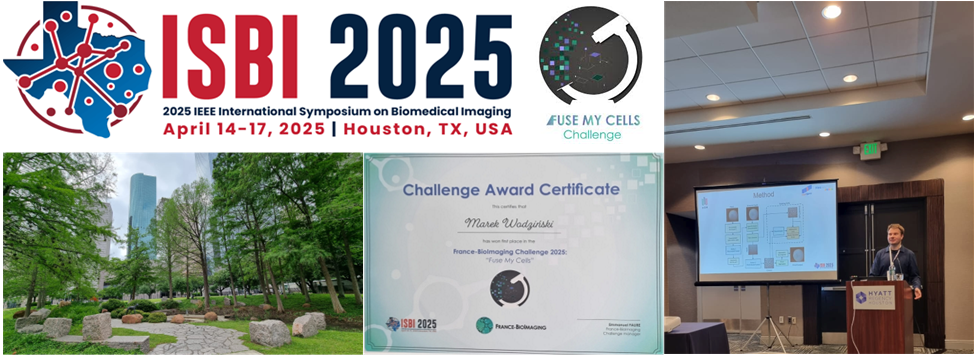
21.03.2025 - Success at the InnoDiament competition
The Master Thesis authored by Kamil Kwarciak has been honored with the prestigious InnoDiament Award! 🏆 This award is given to a single, carefully selected thesis at AGH University of Kraków for its outstanding practical potential - and I had the pleasure to be the supervisor!
Kamil’s thesis, titled “Unsupervised Segmentation of Defective Skulls in Volumetric Data Using Deep Networks Dedicated to Modality Transfer” delves into the innovative approach of automatic skull segmentation from magnetic resonance volumes. By applying unsupervised modality transfer to computed tomography, the thesis demonstrates how skulls can be directly segmented using simple thresholding techniques, without using any ground-truth annotations. This amazing work was part of the DeepImplant project, funded by NCBR.
Adding to this achievement, the thesis also secured 3rd place in the Diamenty AGH competition! 🥉
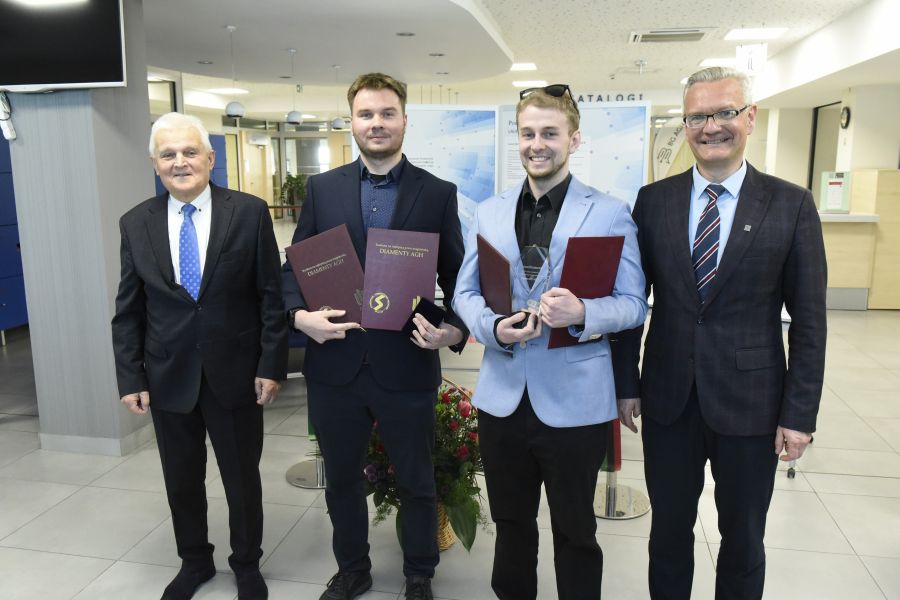
26.02.2025 - DiagNeuro article published in Biomedical Signal Processing and Control
Our most recent article related to the DiagNeuro project has been published in Elsevier Biomedical Signal Processing and Control.
The article presents the outcomes of gait analysis for automatic Parkinson’s disease assessment using signals collected from mixed reality devices. We show that it is possible to perform early Parkinson’s disease diagnosis using general purpose equipment, without specialized and dedicated hardware.
See more: Biomedical Signal Processing and Control
20.02.2025 - Article about learnable symmetry enforcement published in Computer Methods and Programs in Biomedicine
Our article related to improving the automatic skull reconstruction has been published in Computer Methods and Programs in Biomedicine!
The article describes a method dedicated to enforce skull symmetry during the automatic reconstruction by deep learning methods. It shows that the dedicated Symmetry Loss can be used both during training and inference to improve the reconstruction outcomes, especially for out-of-distribution cases.
See more: Computer Methods and Programs in Biomedicine
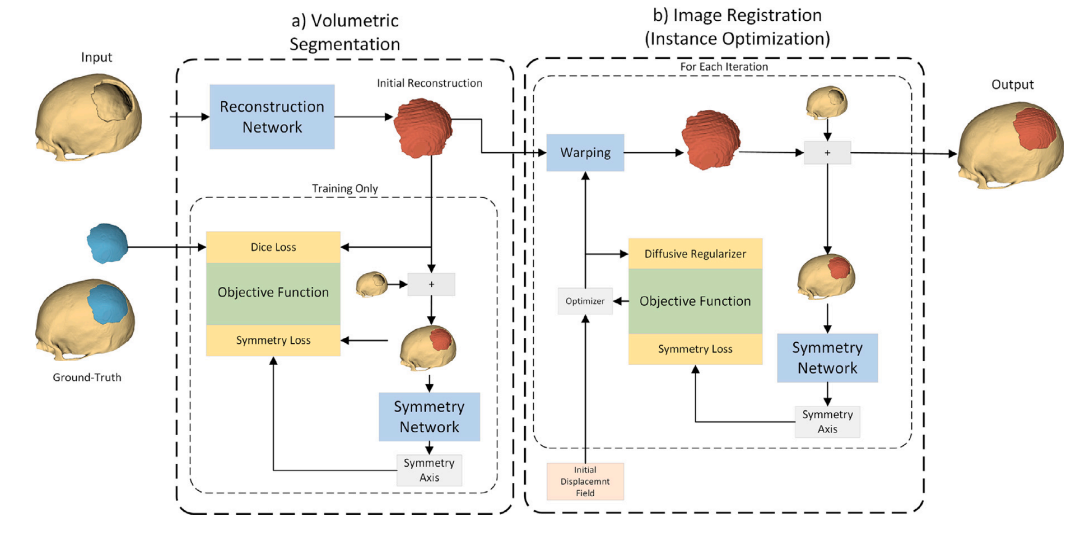
30.12.2024 - Article about brain metastases published in Scientific Reports
The article related to the automatic detection and multi-component segmentation of brain metastases has been accepted and published in Scientific Reports.
The article describes the outcomes of our research on the automated detection and segmentation of brain metastases in longitudinal MRI scans. Our method addresses the challenges of identifying and segmenting new lesions for screening and treatment planning with high accuracy. This work significantly improves the precision and reliability of brain metastases segmentation.
See more: Scientific Reports
25.12.2024 - ToothFairy Challenge Article Published
The article related to the ToothFairy challenge has been published in the IEEE Transactions on Medical Imaging!
The article described the outcomes of the 1st edition of the ToothFairy challenge devoted to the automatic segmentation of the Inferior Alveolar Canal in CBCT volumes, addressing the challenges of voxel-level segmentation with high accuracy. Our method scored the 3rd place during the challenge.
See more: ToothFairy Challenge

10.10.2024 - 1st place in the BraTS-Path Challenge
Our contribution to the BraTS-Path challenge organized during the MICCAI 2024 conference scored the 1st place!
We proposed a contribution based on a digital pathology foundation model (ProvGigaPath) to handle the challenges related to low heterogeneity of the training set and the requirement to generalize into previously unseen samples from different distribution. Our contribution significantly outperformed all other contributions based on careful tuning of general-purpose computer vision models.
See more: BraTS-Path
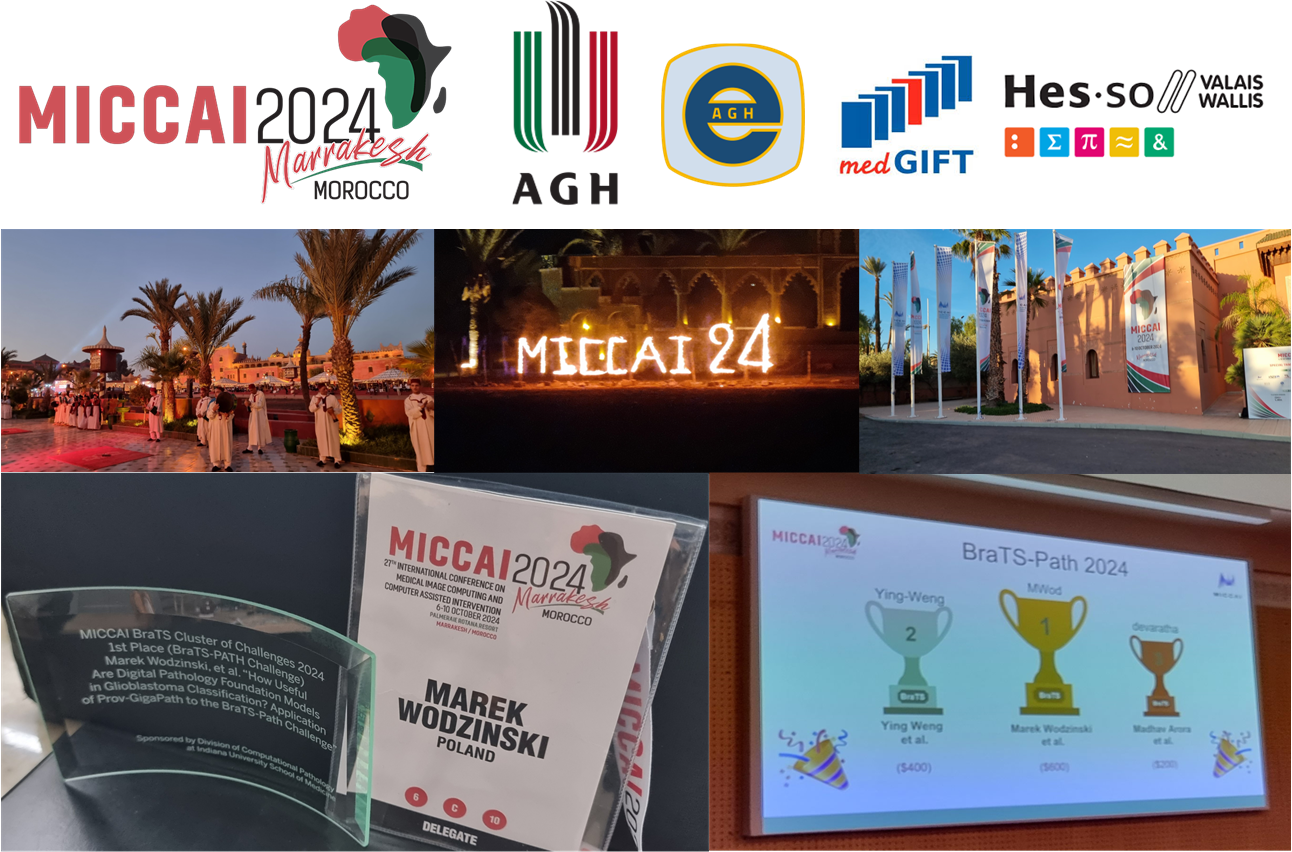
11.09.2024 - DeepImplant Article Published
Our new article connected with the DeepImplant project has been just published in Computers in Biology and Medicine. We show the great impact of strong data augmentation to generalizability of learning-based methods to improve the robustness of automatic cranial defect reconstruction.
See more: Elsevier
14.08.2024 - ExaMode Article in Medical Image Analysis
An article presenting our research about multimodal deep learning in digital pathology has been just published in Medical Image Analysis.
The contribution presents strategy to use both text reports and WSIs to improve deep learning-based methods in digital pathology. The proposed method enhances not only the quantitative results but also allows one to discover relations between visual and textual data in the latent space. The work confirms that multimodal approaches are the future of deep learning in medicine.
See more: Elsevier
04.07.2024 - Contribtion presented and published at International Conference on Computational Science
Our contribution, in collaboration with Sano Science has been recently presented and published at the International Conference on Computational Science (ICCS) conference.
The paper introduces a method dedicated to predicting the thermostability of proteins using a deep transformer model dedicated to text processing. It confirms that the advances in large language models can be easily transferred to other domains, including proteomics.
See more: Springer
01.07.2024 - ACROBAT Article in Medical Image Analysis
The article presenting the outcomes of the 1st edition of the ACROBAT Challenge (MICCAI 2022, Singapore) has been finally published in Medical Image Analysis.
The paper constitutes new state-of-the-art in the registration of whole slide images in histopathology. It presents a careful evaluation of different registration approaches and shows its importance for further downstream tasks. Noteworthy, our method scored 3rd place in the 2022 edition and 1st place in the 2023 edition.
See more: Elsevier
23.06.2024 - HaN-Seg Article Published
The article presenting outcomes of the HaN-Seg Challenge was accepted and published in Radiotherapy and Oncology. The paper describes the results of a challenge dedicated to multimodal segmentation of head and neck organs-at-disk from CT and MR data. It shows the current state-of-the-art and confirms that data preprocessing and training objectives are much more important in low data regimes compared to network architectures.
See more: Elsevier
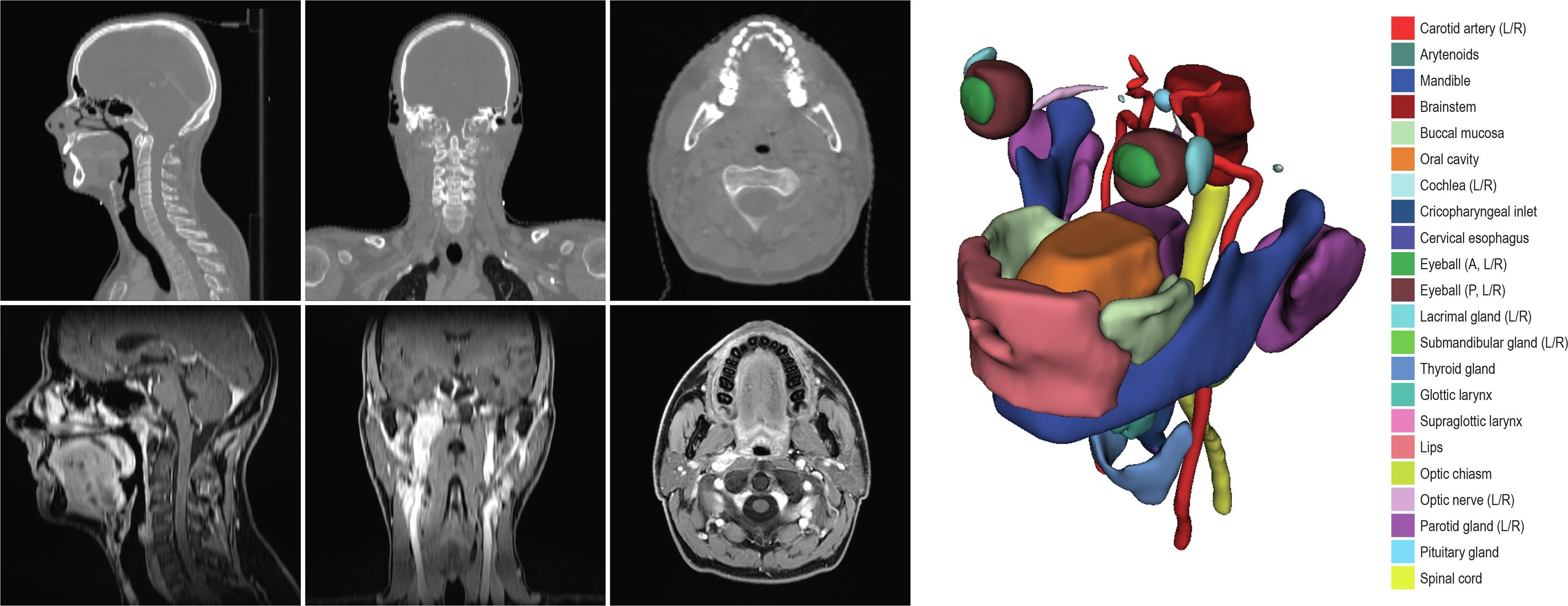
20.06.2024 - Last ExaMode Article
Our last article related to the ExaMode project has been released on arXiv. The article shows that using automatically generated annotations can be as accurate as using annotations prepared by medical experts, and - as a result - decreasing the time and costs associated with the labeling process.
See more: arXiv
30.05.2024 - 3rd position in the LightMyCells Challenge
Our contribution to the LightMyCells challenge organized during IEEE ISBI conference in Athens, Greece scored the 3rd place!
See more: LightMyCells
26.04.2024 - RegWSI Published in Computer Methods and Programs in Biomedicine
Our publication describing robust and accurate method dedicated to WSI registration is available online: CMPB
The article presents the method that won the ACROBAT 2023 challenge. The source code is openly available: GitHub
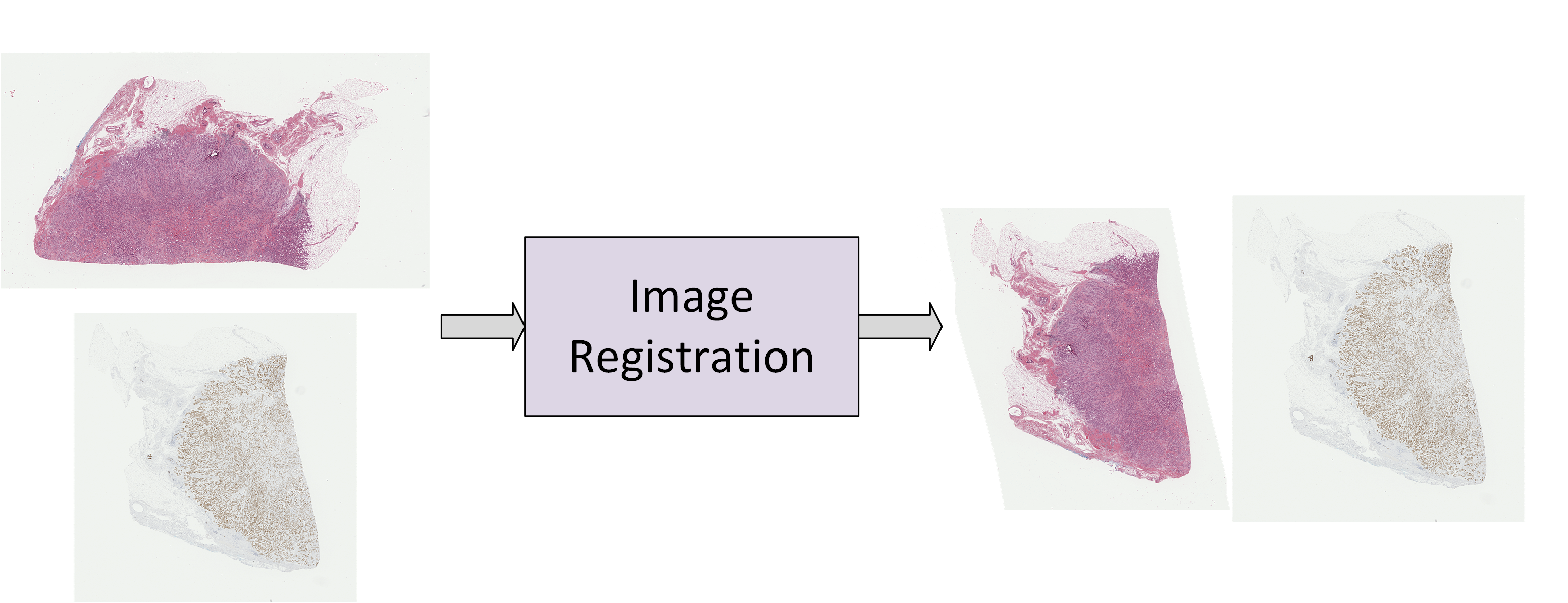
15.04.2024 - Two papers accepted at EMBC 2024
Two contributions from our research group at AGH were accepted for oral presentation and publication during this year EMBC in Florida.
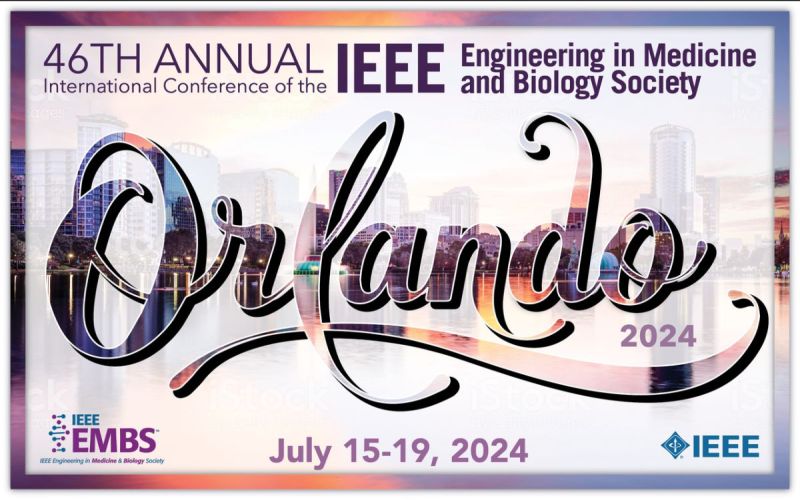
10.02.2024 - The contribution to the SEG.A Challenge published by Springer
Our article presenting the contribution to the SEG.A challenge was published by Springer. The article presents the method that scored the 1st place in the clinical evaluation.
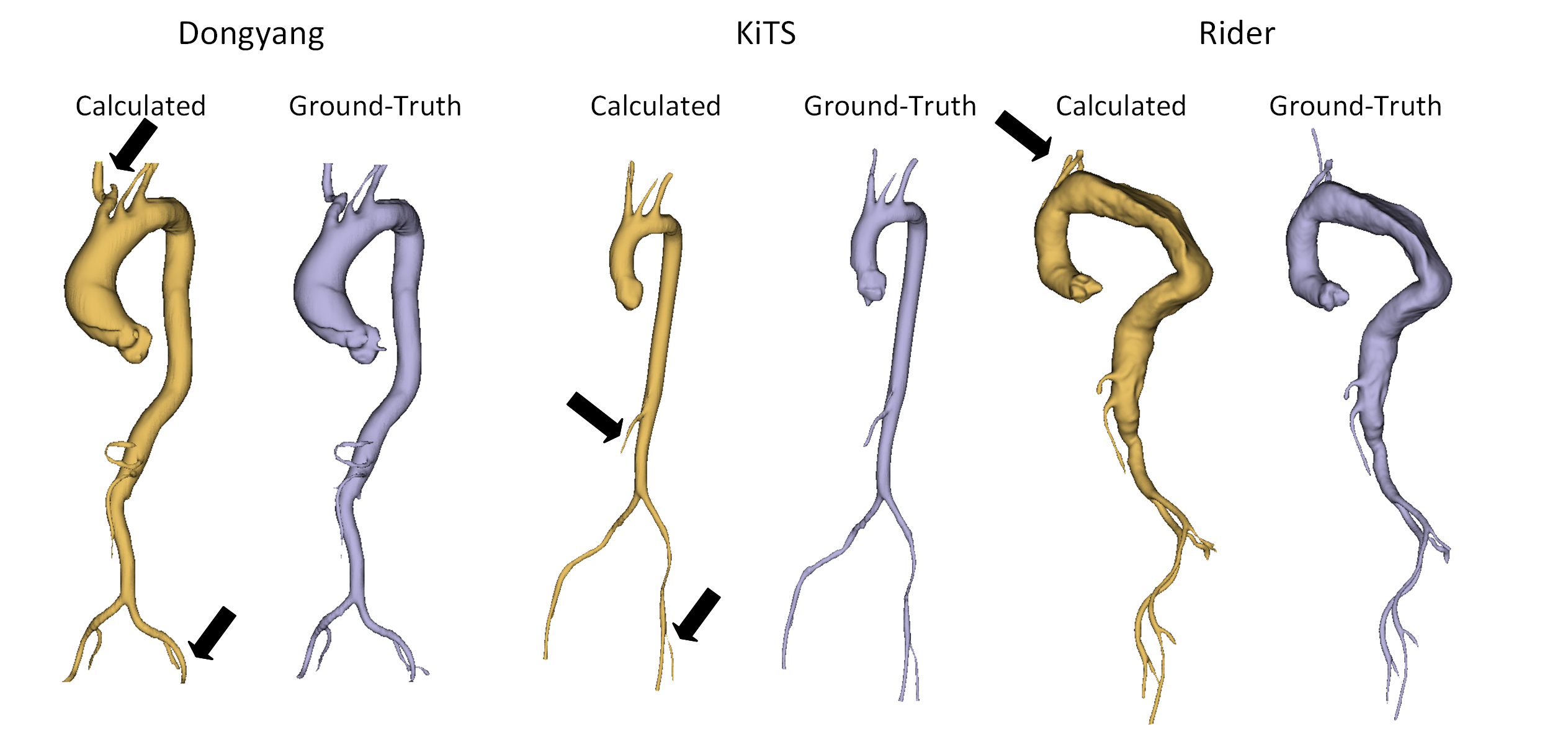
09.11.2023 - Inter-species self-supevised pretraining published in Scientfific Reports
The article presenting the concept of using self-supervision to transfer knowledge from large datasets into low data regime has been published in Scientific Reports.
The work presents that it is possible to perform large-scale self-supervised training on human data and then transfer the knowledge to veterinary imaging.
15.10.2023 - Success at the MICCAI 2023 conference!
I am happy to share the recent success during the MICCAI 2023 conference!
Our contributions won the ACROBAT 2023 challenge, scored 1st place in the SEG.A Challenge clinical evaluation, and 3rd position in the ToothFairy competition. We are looking forward to the next years competitions and the lighthouse challenges in 2025.
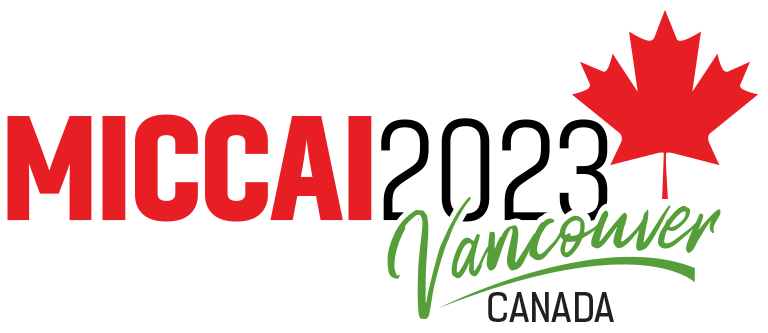
29.07.2023 - Article accepted at CVPR LIMIT Workshop
Our article presenting the preliminary work related to the influence of generetive augmentation on automatic cranial defect reconstruction was accepted to by presented during the CVPR 2023 LIMIT Workshop.
17.07.2023 - BraTS-Reg Contribution published by Springer
The contribution to the BraTS-Reg Challenge has been finally published by Springer. The article presents the method that scored the 1st place during the ISBI 2022 edition and 3rd place in the MICCAI 2022 competition.
09.06.2023 - AutoImplant Challenge publication published in Medical Image Analysis
The challenge publication presenting the outcomes of the AutoImplant challenge has been finally published in Medical Image Analysis. Our contribution has scored the 1st place in all tasks organized during the challenge.
29.05.2023 - DeepImplant Article accepted at MICCAI 2023
The first DeepImplant article was accepted for publication at the MICCAI 2023 conference in Vancouver.
The article presents our contribution that reformulates the problem from volumetric segmentation to point cloud completion, presenting superior generalizability with low computational requirements.
18.04.2023 - Two papers accepted at EMBC 2023
Two papers were accepted for publication at the EMBC 2023 conference in Sydney.
The first article presents the contribution improving WSI quality control by explicit artifact augmentation. The second contribution shows the potential of using vision transformers to improve Parkinson’s disease diagnosis using voice recordings.
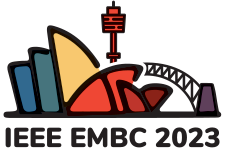
01.03.2023 - DeepImplant Project Started
The DeepImplant project has oficially started!
The goal of the project is to propose fully automatic method to model, manufacture, and visualize personalized cranial implants in real-time. We will develop novel AI tools to solve the problem and MR/VR technologies to show the outcomes to medical experts.

13.02.2023 - Webiste up and running
Welcome to my personal website! You will find there the most recent news about my research activity in medical image analysis, deep learning, and computer vision.

